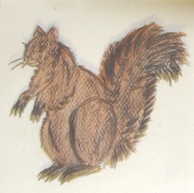IN THIS SECTION: About OI
Information about Orthostatic Symptoms, Conditions That Cause Orthostatic Symptoms and Types of Orthostatic Problems
This section provides the medical information about orthostatic intolerance (OI). It has been written for people with OI and their families/caregivers to understand and to use in every day life, in reality.
If there are too many medical terms that are not explained, we ask that you let us know so we can fix that. We realize that for some people, it will simple over simplified. To you, we apologize. We have erred on the side of making it understandable to most people. We have not copied the language from the medical literature - we have translated it into more everyday language. If you want more details, you are free to go to the articles.

What is OI (Orthostatic Intolerance)? This subsection addresses what orthostatic intolerance (OI) is.
Symptoms of OI: There are a number of symptoms that come with OI. Some start right after standing up (Or sitting up). SOme develop after a person has been standing for 3 to 10 minutes. Some don't develop until a person has been up for more than 30 minutes. Some symptoms may be due to the blood pooling and blood flow. Other symptoms may be due to the condition that is causing the orthostatic intolerance. . The symptoms can have a major effect on simple daily activities. It can be triggered by - and interfere with- daily activities like eating, showering, walking the stairs and more strenuous exercise.


Types of OI defined by the changes in BP and Pulse: The blood pressure and pulse are often used to understand what is causing the orthostatic problems. They can start within minutes and settle down, then new symptoms start a little later. Clinically, there are patterns to the blood pressure and pulse and the timing of the symptoms. The different patterns are used to diagnose the problems.
The information about blood pressure and pulse can come from data collected in the office and/or during tilt-table testing (TTT).

 Deconditioning & Bed Rest: Many people with an orthostatic problem start with another event, like an infection, trauma such as a concussion or traumatic brain injury, surgery, or other events. This event is often followed by orthostatic symptoms. The orthostatic symptoms can develop because of the original problem or they can be "secondary", a second problem. If a person has had a time of prolonged bedrest as they recovered from the trigger event (the first event), the bed rest creates a 2nd reason for orthostatic problems. The body starts to adapt to bed rest within the first 48 hours. This adaptation is called "deconditioning". There are a number of changes that happen to the body with prolonged bed rest.
Deconditioning & Bed Rest: Many people with an orthostatic problem start with another event, like an infection, trauma such as a concussion or traumatic brain injury, surgery, or other events. This event is often followed by orthostatic symptoms. The orthostatic symptoms can develop because of the original problem or they can be "secondary", a second problem. If a person has had a time of prolonged bedrest as they recovered from the trigger event (the first event), the bed rest creates a 2nd reason for orthostatic problems. The body starts to adapt to bed rest within the first 48 hours. This adaptation is called "deconditioning". There are a number of changes that happen to the body with prolonged bed rest.
Author: Kay E. Jewell, MD
Page Last Updated: August 12, 2012
